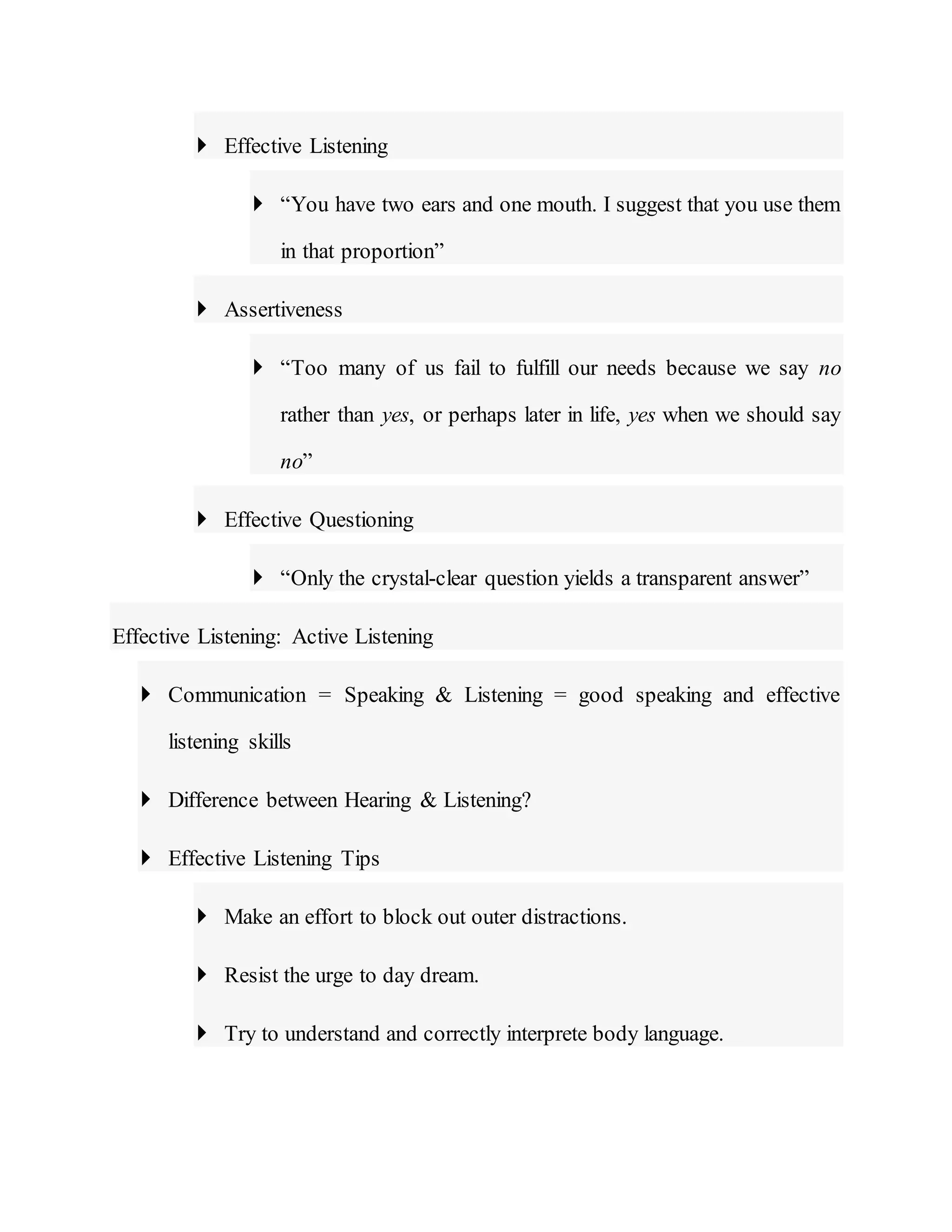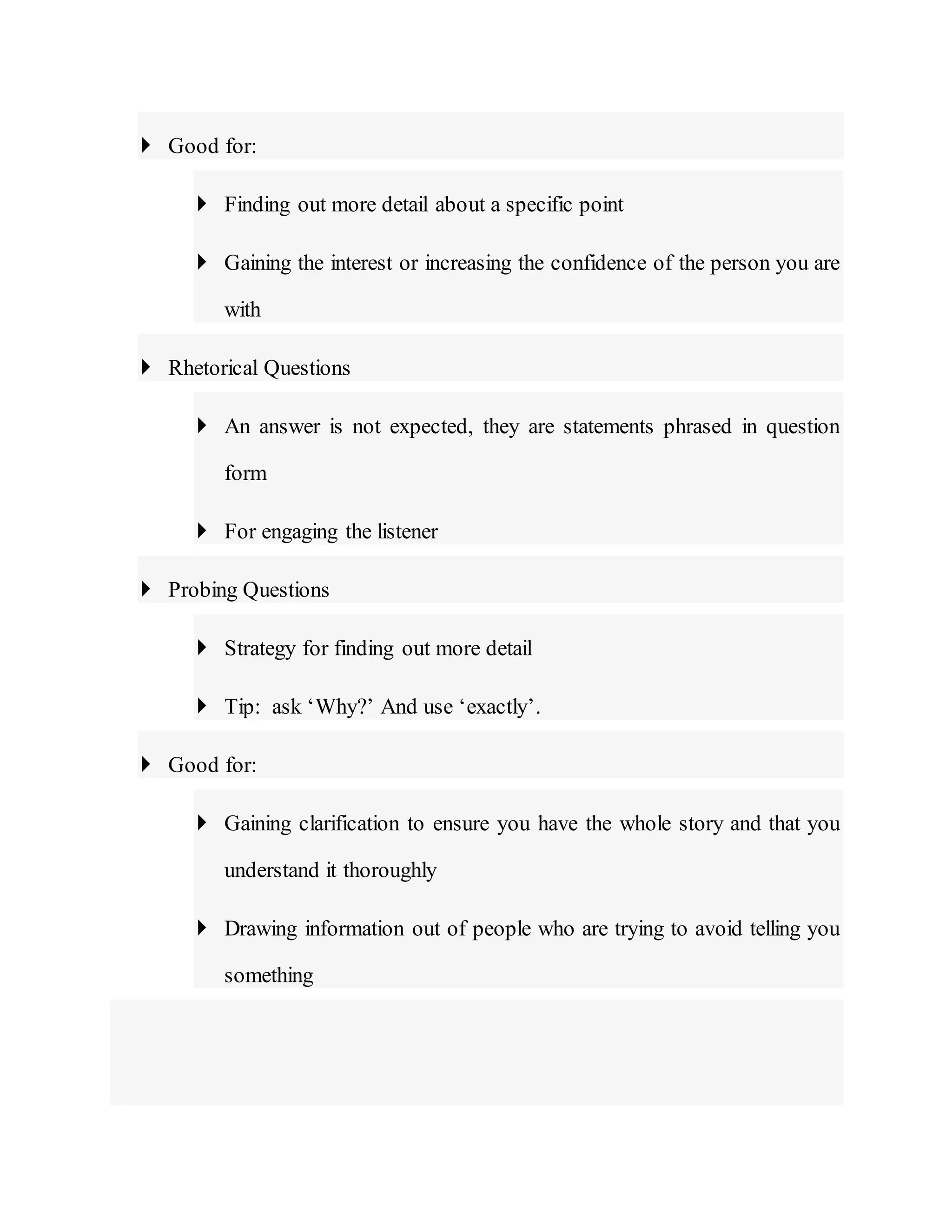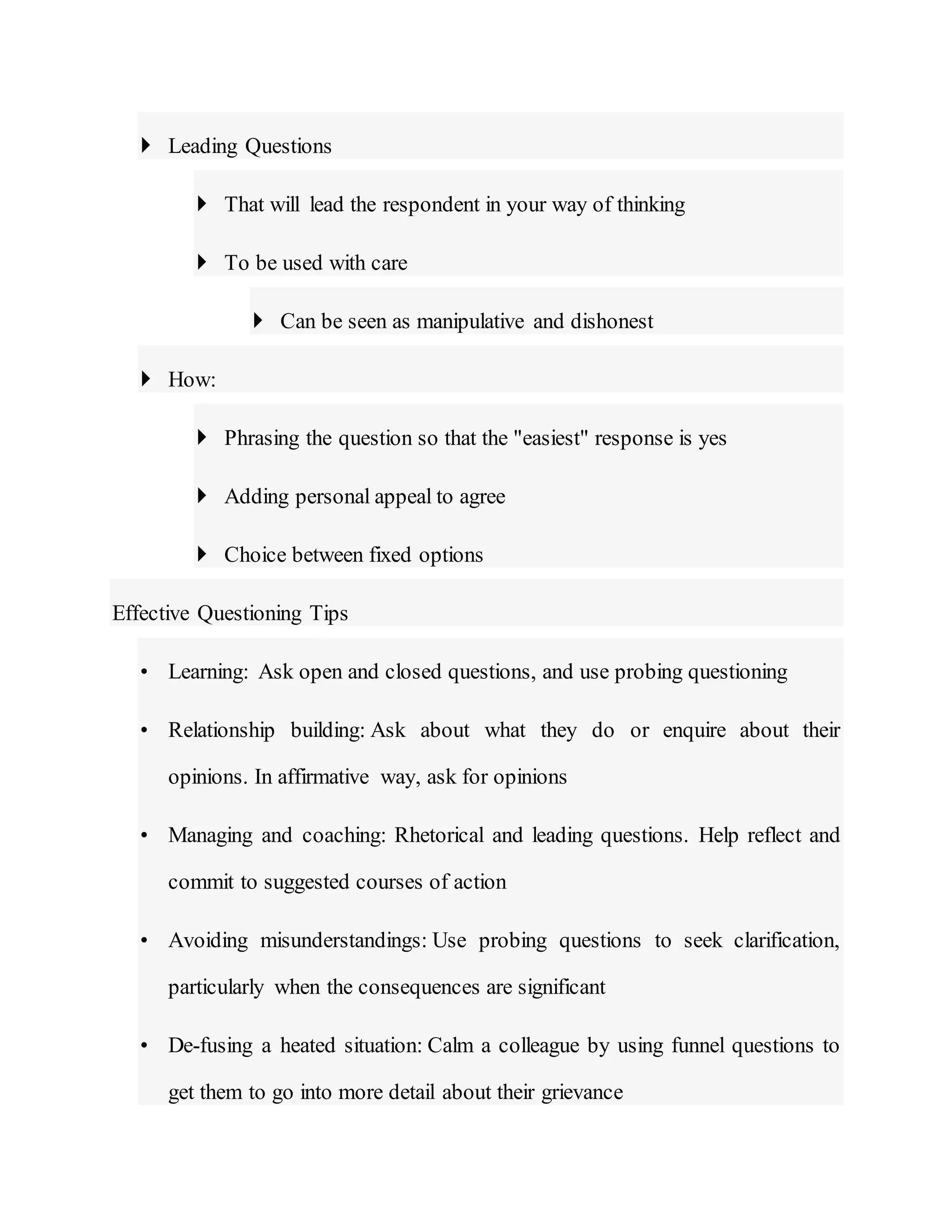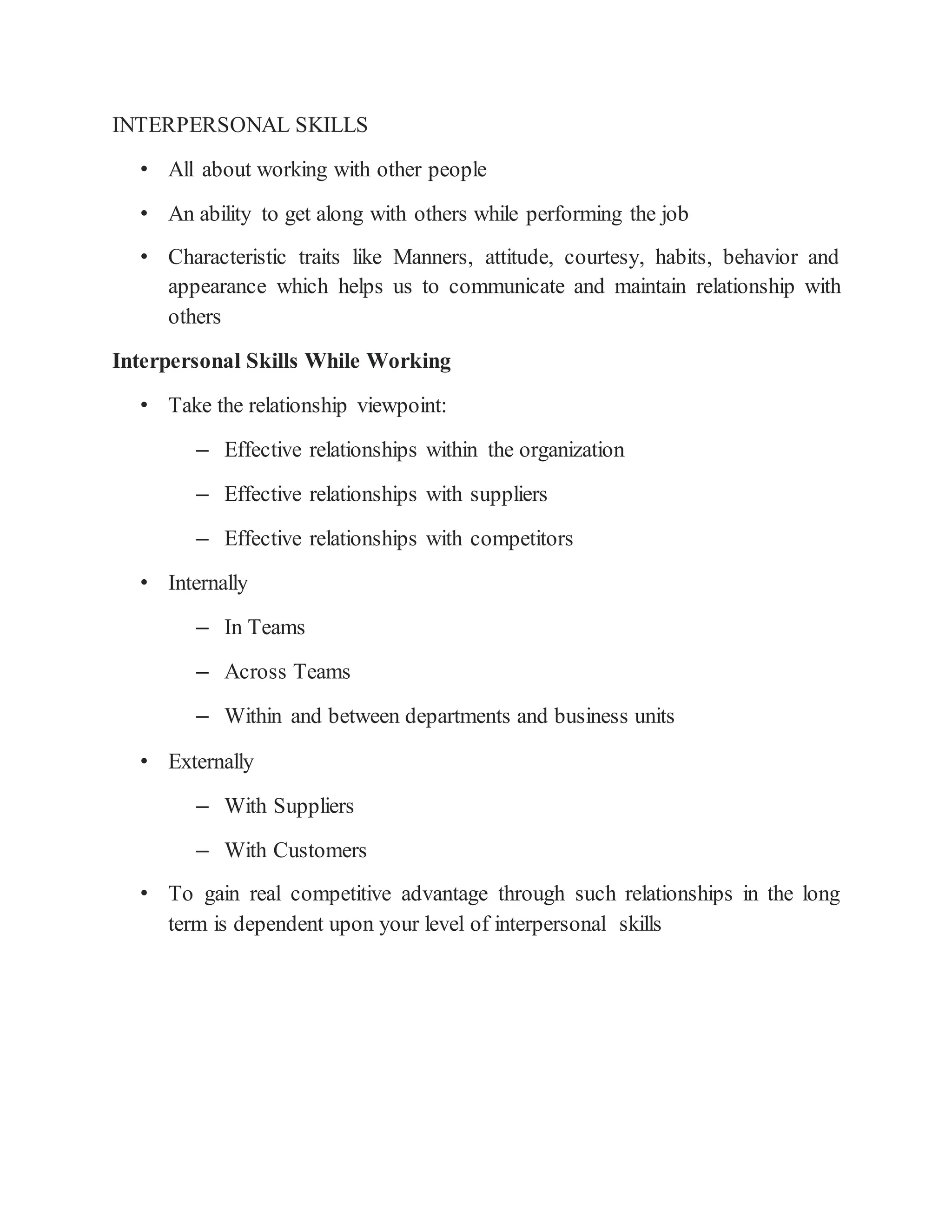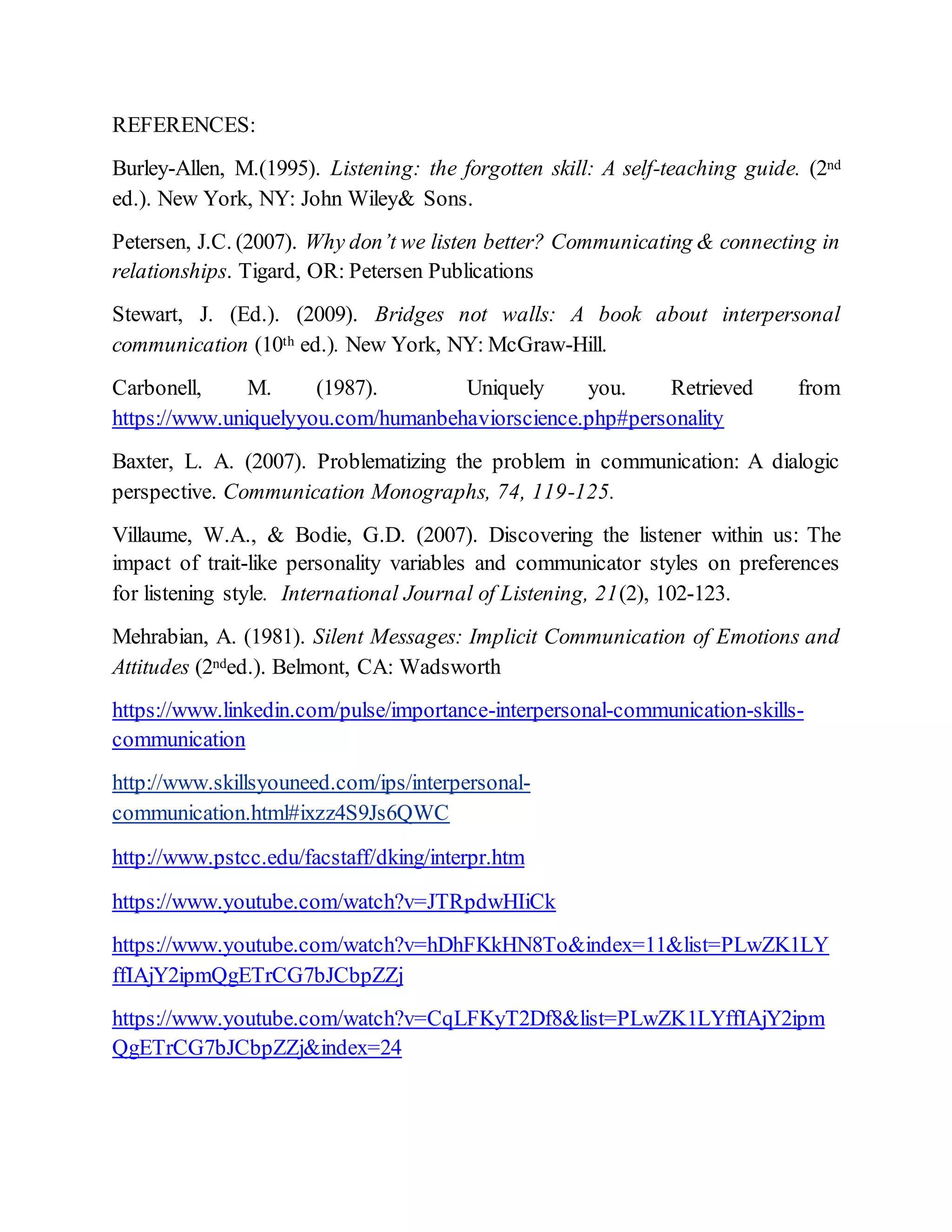This document discusses interpersonal communication and related concepts. It begins with an outline of topics covered in an interpersonal communication unit, including effective listening skills, assertiveness, and asking questions. It then defines interpersonal communication as the process of sending and receiving information between two or more people through verbal and nonverbal channels. Key aspects covered include types of communication, basic elements like communicators and messages, importance of skills like listening, and principles of communication being contextual and complicated.



